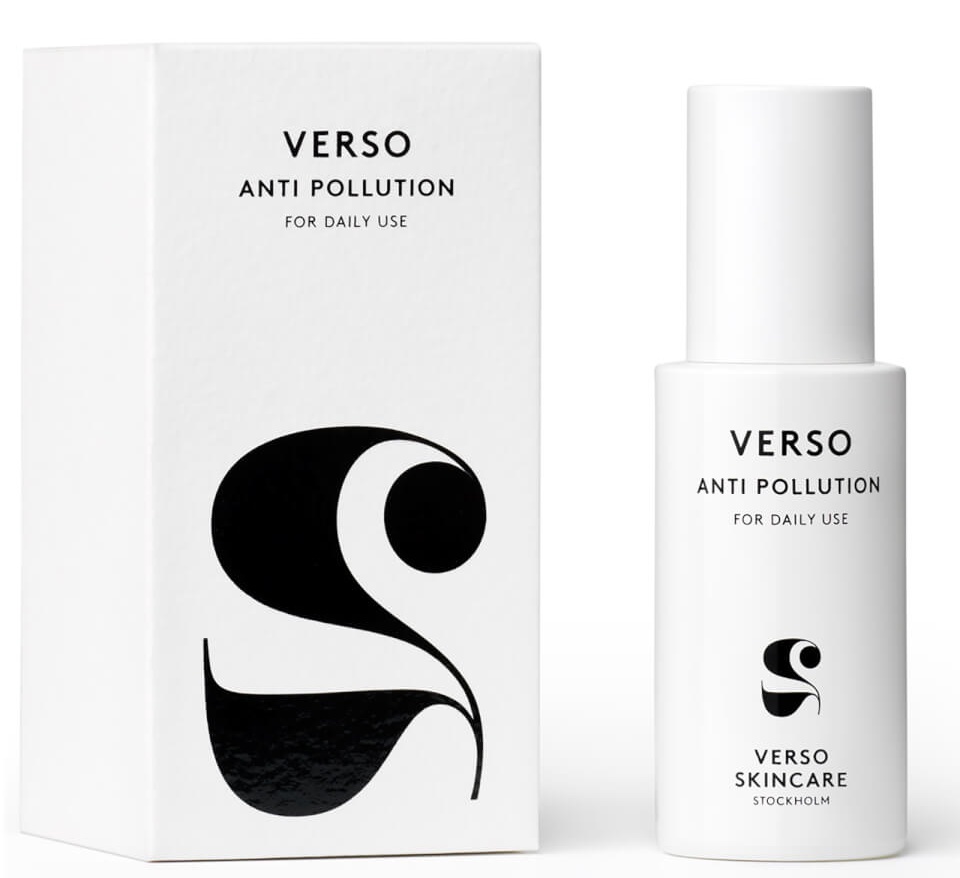
Anti Pollution For Daily Use
Highlights
Key Ingredients
Other Ingredients
Skim through
| Ingredient name | what-it-does | irr., com. | ID-Rating |
|---|---|---|---|
| Water (Aqua) | solvent | ||
| Propanediol | solvent, moisturizer/humectant | ||
| Diisopropyl Adipate | emollient, solvent | 0, 0 | |
| Lecithin | emollient, emulsifying | goodie | |
| Acrylic Acid/Acrylamidomethyl Propane Sulfonic Acid Copolymer | chelating, viscosity controlling | ||
| Dimethylmethoxy Chromanol | antioxidant | goodie | |
| Glyceryl Caprylate | preservative | ||
| Xanthan Gum | viscosity controlling |
Verso Anti Pollution For Daily UseIngredients explained
Good old water, aka H2O. The most common skincare ingredient of all. You can usually find it right in the very first spot of the ingredient list, meaning it’s the biggest thing out of all the stuff that makes up the product.
It’s mainly a solvent for ingredients that do not like to dissolve in oils but rather in water.
Once inside the skin, it hydrates, but not from the outside - putting pure water on the skin (hello long baths!) is drying.
One more thing: the water used in cosmetics is purified and deionized (it means that almost all of the mineral ions inside it is removed). Like this, the products can stay more stable over time.
Propanediol is a natural alternative for the often used and often bad-mouthed propylene glycol. It's produced sustainably from corn sugar and it's Ecocert approved.
It's quite a multi-tasker: can be used to improve skin moisturization, as a solvent, to boost preservative efficacy or to influence the sensory properties of the end formula.
A water light oily liquid (aka ester) that has a light skin feeling and is often used to reduce tackiness and lighten the feel of heavier emollients. It's popular in sunscreens to "lighten up" oil soluble chemical UV filters.
A very common ingredient that can be found in all cell membranes. In cosmetics it's quite the multi-tasker: it's an emollient and water-binding ingredient but it's also an emulsifier and can be used for stabilization purposes. It's also often used to create liposomes.

A synthetic molecule that has a similar structure to α-Tocopherol (vitamin E) and works as a super potent antioxidant. It's known for not only protecting against reactive oxygen species (ROS) but also against reactive nitrogen species (RNS) (both are evil reactive molecules that cause damage to cells and tissues and are responsible for several mechanisms which trigger skin aging).
There are different methods to evaluate the antioxidant power of an ingredient and according to the so-called TBA-assay, Dimethylmethoxy Chromanol is a more potent antioxidant than BHT, trolox or tocopherol. Its recommended dosage is only 0.01-0.05%, that also signals how potent Lipochroman-6 is.
A 100% plant derived, natural (Ecocert approved) multi-functional ingredient that has emollient and moisturizing properties, can work as a co-emulsifier (meaning that next to other emulsifiers it can help water and oil to mix) and even more importantly has a strong antimicrobial activity.
Thanks to this last thing, it allows a lower percentage of traditional preservative or it might even be able to completely replace them.
It's one of the most commonly used thickeners and emulsion stabilizers. If the product is too runny, a little xanthan gum will make it more gel-like. Used alone, it can make the formula sticky and it is a good team player so it is usually combined with other thickeners and so-called rheology modifiers (helper ingredients that adjust the flow and thus the feel of the formula). The typical use level of Xantha Gum is below 1%, it is usually in the 0.1-0.5% range.
Btw, Xanthan gum is all natural, a chain of sugar molecules (polysaccharide) produced from individual sugar molecules (glucose and sucrose) via fermentation. It’s approved by Ecocert and also used in the food industry (E415).
You may also want to take a look at...
| what‑it‑does | solvent |
| what‑it‑does | solvent | moisturizer/humectant |
| what‑it‑does | emollient | solvent |
| irritancy, com. | 0, 0 |
| what‑it‑does | emollient | emulsifying |
| what‑it‑does | chelating | viscosity controlling |
| what‑it‑does | antioxidant |
| what‑it‑does | preservative |
| what‑it‑does | viscosity controlling |





